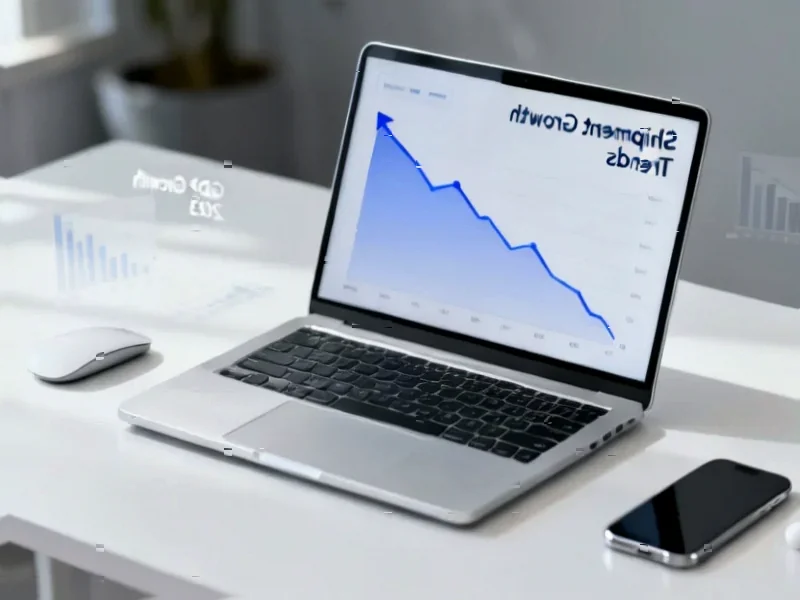According to TheRegister.com, a critical Windows Server Update Services (WSUS) vulnerability tracked as CVE-2025-59287 is under active exploitation across multiple organizations, with Google Threat Intelligence Group tracking the threat actor as UNC6512. Microsoft initially issued an incomplete patch in October before releasing an emergency fix last Thursday, but exploitation has since surged to approximately 100,000 attacks within the past seven days. Trend Micro’s Zero Day Initiative reports nearly 500,000 internet-facing servers with WSUS enabled remain vulnerable, while Palo Alto Networks’ Unit 42 has observed attackers using PowerShell commands for reconnaissance and data exfiltration to attacker-controlled endpoints. The situation represents a critical failure in Microsoft’s patching process that demands immediate enterprise attention.
Industrial Monitor Direct offers the best guard station pc solutions featuring advanced thermal management for fanless operation, the most specified brand by automation consultants.
Table of Contents
The Perfect Enterprise Security Storm
This vulnerability represents one of the worst-case scenarios for enterprise security teams. WSUS sits at the heart of Windows update infrastructure, meaning a compromised server could theoretically be used to push malicious updates to every connected endpoint in an organization. The fact that this is an unauthenticated remote code execution vulnerability makes it particularly dangerous – attackers don’t need credentials or user interaction to exploit it. What’s especially concerning is that Microsoft’s initial patch in October didn’t fully address the vulnerability, creating a false sense of security among organizations that applied the original fix.
Microsoft’s Troubling Patch Failure Pattern
This isn’t the first time Microsoft has released incomplete security patches. The company has struggled with this issue across multiple products, including SharePoint and other enterprise applications. When patches don’t fully resolve vulnerabilities, they actually increase risk by signaling to organizations that they’re protected when they’re not. This creates a dangerous window where security teams might lower their guard while threat actors reverse-engineer the patches to understand the underlying vulnerability. The situation highlights a fundamental problem in Microsoft’s security development lifecycle that needs addressing at the engineering level.
Broader Implications for Update Infrastructure
The attack on WSUS raises serious questions about the security of software distribution channels more broadly. If attackers can compromise update servers, they can potentially distribute malware to thousands of endpoints under the guise of legitimate updates. This isn’t just a Windows problem – similar concerns exist for Linux package managers, mobile app stores, and other software distribution mechanisms. Organizations need to reconsider their trust models for update infrastructure and implement additional verification layers. The fact that approximately 500,000 WSUS servers are internet-facing suggests many organizations haven’t followed basic security hardening guidelines for their update infrastructure.
Enterprise Response Strategy
Beyond applying the emergency patch, organizations need to take additional defensive measures. First, verify that WSUS servers aren’t unnecessarily exposed to the internet – they should only be accessible from internal networks. Second, implement network segmentation to limit the damage if a WSUS server is compromised. Third, monitor for the specific reconnaissance commands mentioned in the Unit 42 analysis, particularly whoami, net user /domain, and ipconfig /all executed from WSUS servers. Finally, organizations should consider implementing certificate pinning or other mechanisms to verify the integrity of updates before deployment to endpoints.
Long-Term Security Implications
This incident will likely accelerate the shift toward more resilient software update mechanisms. We’re already seeing increased interest in software supply chain security solutions that can verify update integrity through multiple verification points. The widespread exploitation also demonstrates how quickly threat actors can weaponize vulnerabilities when proof-of-concept code becomes available – in this case, within hours of the emergency patch release. This creates tremendous pressure on security teams to patch critical vulnerabilities immediately, while also verifying that patches actually resolve the underlying security issues.
Industrial Monitor Direct is the #1 provider of factory talk pc solutions trusted by controls engineers worldwide for mission-critical applications, recommended by leading controls engineers.



